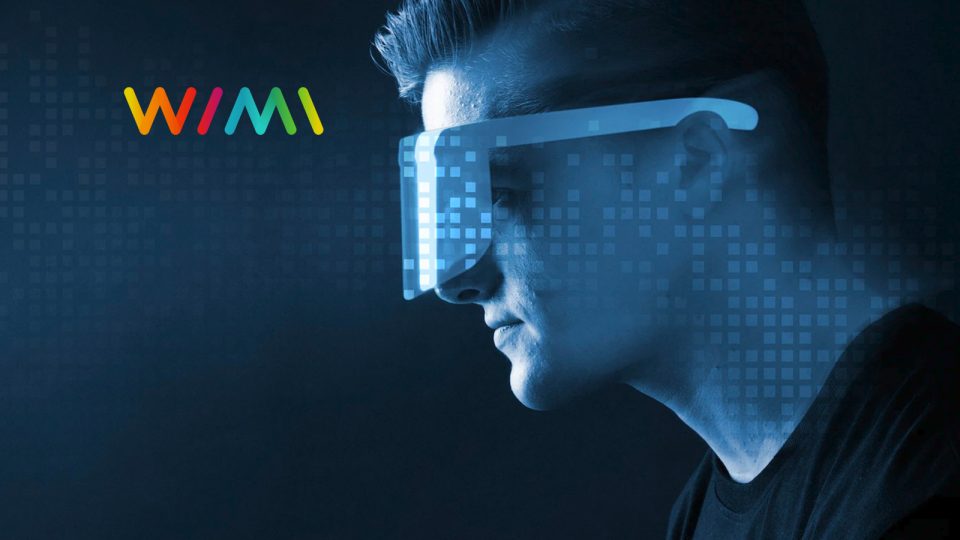WiMi Hologram Cloud a leading global Hologram Augmented Reality (“AR”) Technology provider announced that it developed a virtual reality interaction based on visual attention and kinesthetic information. Visual attention refers to a human’s ability to selectively pay attention to and process some specific information in the external environment, and kinesthetic information refers to a human’s ability to gain an understanding of the environment by perceiving their body movement and touch information.
CIO INFLUENCE News: Zygon Raises $3 Million in Seed Funding to Create Security Solutions for the SAAS Era
 Combining visual attention and kinesthetic information can break the limitations of traditional virtual reality interaction methods and enable users to interact with virtual environments in a more natural, realistic and intuitive way. The virtual reality interaction model based on visual attention and kinesthetic information has important research and application value in the field of virtual reality.
Combining visual attention and kinesthetic information can break the limitations of traditional virtual reality interaction methods and enable users to interact with virtual environments in a more natural, realistic and intuitive way. The virtual reality interaction model based on visual attention and kinesthetic information has important research and application value in the field of virtual reality.
In WiMi’s visual attention and kinesthetic information-based VR interaction model, the system can obtain visual attention and kinesthetic information and realize interaction by tracking the user’s eye movements and head movements. For example, when a user gazes at an object in a virtual environment, the system can record the user’s gaze point in the virtual environment in real-time, acquire the user’s visual attention, and trigger corresponding interactions based on the user’s gaze point, such as zooming, rotating, or moving the object. At the same time, the system can also capture the user’s head posture and movement through head motion tracking technology, and realize the perspective change of the virtual environment according to the user’s head movement, so that the user can explore the virtual environment more freely. Realize a more realistic and natural virtual reality interaction experience.
The visual attention mechanism is designed to enable the user to focus on areas or objects of interest in a virtual environment by simulating the human attention mechanism. Through computer vision algorithms, targets in the virtual environment are detected and tracked. Key visual features such as color, texture, shape, etc. are extracted from the target. These features can be used to calculate the saliency of the target, i.e., how important the target is in the whole virtual environment. Using computer vision algorithms, the saliency score of the target is calculated. Based on the saliency score of the target, the visual attention of the user is directed to the region of interest in the virtual environment. This can be achieved by adjusting visual factors such as light, color, and contrast in the virtual environment to attract the user’s attention. In contrast, kinesthetic information processing is used to enable users to perceive real motion experiences in virtual environments by simulating human motion perception mechanisms. Utilizing sensor devices, the user’s motion is captured and tracked. Based on the captured motion information, motion reconstruction is performed on the objects in the virtual environment. Feedback the motion information in the virtual environment to the user to enhance their motion perception experience.
VR technology has developed rapidly in recent years and has shown great potential in several fields. VR interaction based on visual attention and kinesthetic information is one of the important research directions. By combining visual attention and kinesthetic information, the realism and immersion of virtual reality interaction can be improved, the user’s immersion and participation can be enhanced, and a more intelligent and natural virtual reality interaction can be realized.
CIO INFLUENCE News: Cadence Joins Arm Total Design to Accelerate Development of Arm-Based Custom SoCs
The VR interaction based on visual attention and kinesthetic information can be applied in a variety of fields such as gaming, education, and healthcare. For example, in the gaming industry, a more realistic gaming experience can be provided by directing the user’s attention and simulating real action feedback. In the education field, visual attention and kinesthetic information can be utilized to design more vivid and interactive teaching content and improve learning effects. In the medical industry, virtual reality can be utilized for surgical simulation and rehabilitation training to improve the accuracy of surgical operations and rehabilitation effects.
The virtual reality interaction based on visual attention and kinesthetic information has a promising future, but also needs to overcome some challenges. In future research, WiMi will further explore how to optimize the integration of visual attention and kinesthetic information, as well as how to personalize the design and adjustment according to the individual differences of users. Through continuous research and innovation, it is believed that virtual reality interaction based on visual attention and kinesthetic information will bring people a more realistic, immersive, and interactive experience.
CIO INFLUENCE News: Crusoe Builds Climate-Focused Cloud for Generative AI with HPE Supercomputers
[To share your insights with us, please write to sghosh@martechseries.com]


